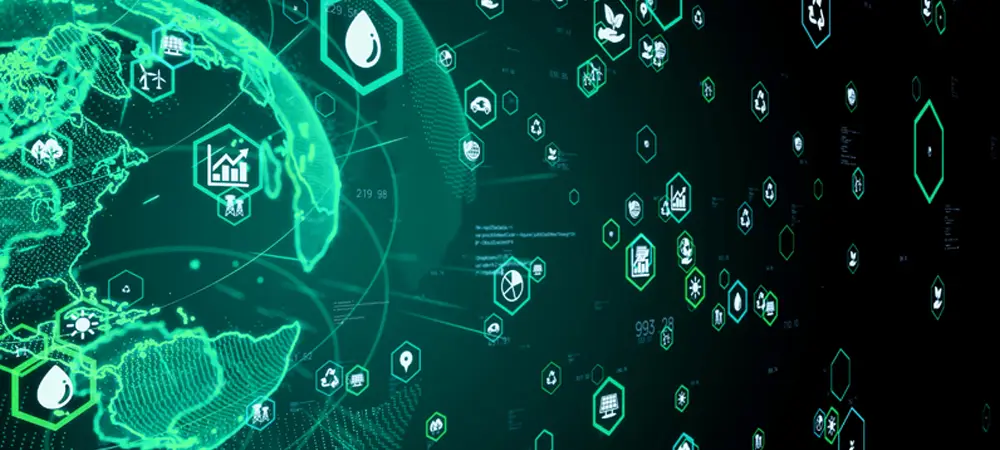Role of Data Science in Climate Change Monitoring


Environmental observation for climate change is an important approach also known as environmental monitoring which is a key aspect in the conservation of the earth and the effective balance of use of resources. Although they eventually served their purpose, conventional methods of monitoring the environment persisted with problems when covering the broad geographical regions, provided limited perception, and often, data was slow in collection. Unlike the previous systems, it can capture extensive areas for extended periods of time. To achieve this, it necessary to apply strong tools of analysis as can provide the extraction of insights. Cases of enhancing environmental monitor, using machine learning and data analytics tools gives a promising result to environmental monitoring. All these techniques in one way or another assist us to end up with better environmental data analytics. This helps in the ability of better prediction on the issues affecting the environment, faster solutions to problems and sustainable utilization of resources. Best data science courses offered by universities in Gurgaon realizing the increasing use of remote sensing data to monitor environmental changes and analysis and analytics techniques. They are inculcating the importance of data visualization and analytical skills through their data science course curriculum to students, aiming to provide them robust platform for their careers in this field. They are educating the need for Data representation and analysis through Data Science course curriculum to their students, to make a strong platform for students to flourish in this sector.
Need of Environment Monitoring
Consequently, social inequalities evident in with the scars of the Covid-19 pandemic and the current political volatility, the previous structural weaknesses became more evident, and the societies became more fragile with intermittent interruptions and natural disasters. Aside from societal instability, one could not ignore the looming resource scarf that hangs over one’s head. Environmental factors including climate change, resource depletion and biodiversity impinge on already challenged systems. As for these multifaceted issues, they require an immediate and consolidated response from all stakeholders, even as societies face a constantly shifting range of daily emergencies. Hence one has to be very particular about such thing and it requires immediate attention towards thing which are sustainable in nature and towards the environment. It also helps to establish insight to enable students to mitigate and manage environmental disasters due to consistent observation of environmental conditions. This makes environmental monitoring an imperative exercise in the quest to curb climate change. Unfortunately, the organisation still cannot even perceive the threats that are looking ahead due to the lack of an efficient environmental monitoring system in place. Even with the measured and directed efforts of environmental control it is important that there be a systemic generation of data on the health of our environment. They normally encompass a twofold process on regular checking of environmental aspects for instance; water, soil, air, vegetation among others; and process; comprising of hydrological; meteorological among others. Hence, one cannot argue the relevance of environment monitoring today given the various forms of ecological threats.
Traditional methods used for environment monitoring.
Although prior conventional environmental monitoring systems such as In-setu Monitoring, Survey Monitoring, and Surrogating Monitoring gave some value at first, they became progressively less useful as our world became increasingly complicated. This called for adoption of new methodologies and use of advanced technologies as well as operating systems. As Lloyd pointed out, and in relation to traditional approaches to vegetation mapping there were of course their advantages and disadvantages, but the shift to remote sensing signified a difference in paradigm. By surmounting many of the drawbacks of its antecedents, it climbed to a level of sophistication that rendered it the most suitable tool for environmental surveillance at the time. Besides, wireless sensors have also been brought into focus of the modern technology whereby the sensor has emerged into a conspicuous component of modern monitor age methods. The latter has been added to today’s revolution where machine learning and data analytic forms the basis of a scientist’s framework with regard to environmental issues.
The Rise of Data-Driven Solutions
With the advent of Remote sensing in India in the late 1900s, environmental monitoring was revolutionised forever. Following its 2003 introduction, Resourcesat-1 altered Indian agriculture research and monitoring. It was not just limited to agriculture monitoring, rather forest cover monitoring, flood mapping and so on. Low-Cost Sensors (LCSs) are changing the conventional way to monitor and measure instances in real-time with the help of micro-scale sensing techniques. The use of LCSs has benefits in terms of cost-effectiveness, compactness, and portability which make these devices an efficient alternative against the high-cost monitoring systems. In monitoring, dense interconnected embedded sensor networks have enabled it to gather data, evaluate data, formulate conclusions, and operate at levels of detail never beforehand possible. IoT based environmental monitoring system coupled with prevalent machine learning models, remote sensing data and data analytics are the present scope of data driven techniques. A wireless sensor network (WSN) plays a key role in IoT. It consists of a large number of distributed sensors interconnected through wireless links for physical and environmental monitoring purposes. Satellite imaging too has been essential in studying the environmental impacts of ocean currents, land – use patterns and other environmental parameters. Continuous planet observation and environmental monitoring could be greatly enhanced with the use of satellite imaging. The cloud-based environment monitoring systems are also essential for future scope. The recent years of 2019 and 2020 saw a rise in GEMS (Geospatial Environment Monitoring Spectrometers), highlighting another crucial tool in large scale environment monitoring. Best data science universities in Gurgaon uses project based learning and advance certification and training program for data driven analysis and remote sensing techniques for environment monitoring. Students are advancing in this field and choosing their higher studies in this field. The NorthCap University have recently signed the memorandum of understanding with Haryana Space Application Centre for providing more research opportunities, technology transfer and access to cutting-edge resources.
Authored By

Dr. Poonam Chaudhary
Associate Professor
Department of CSE, NCU














